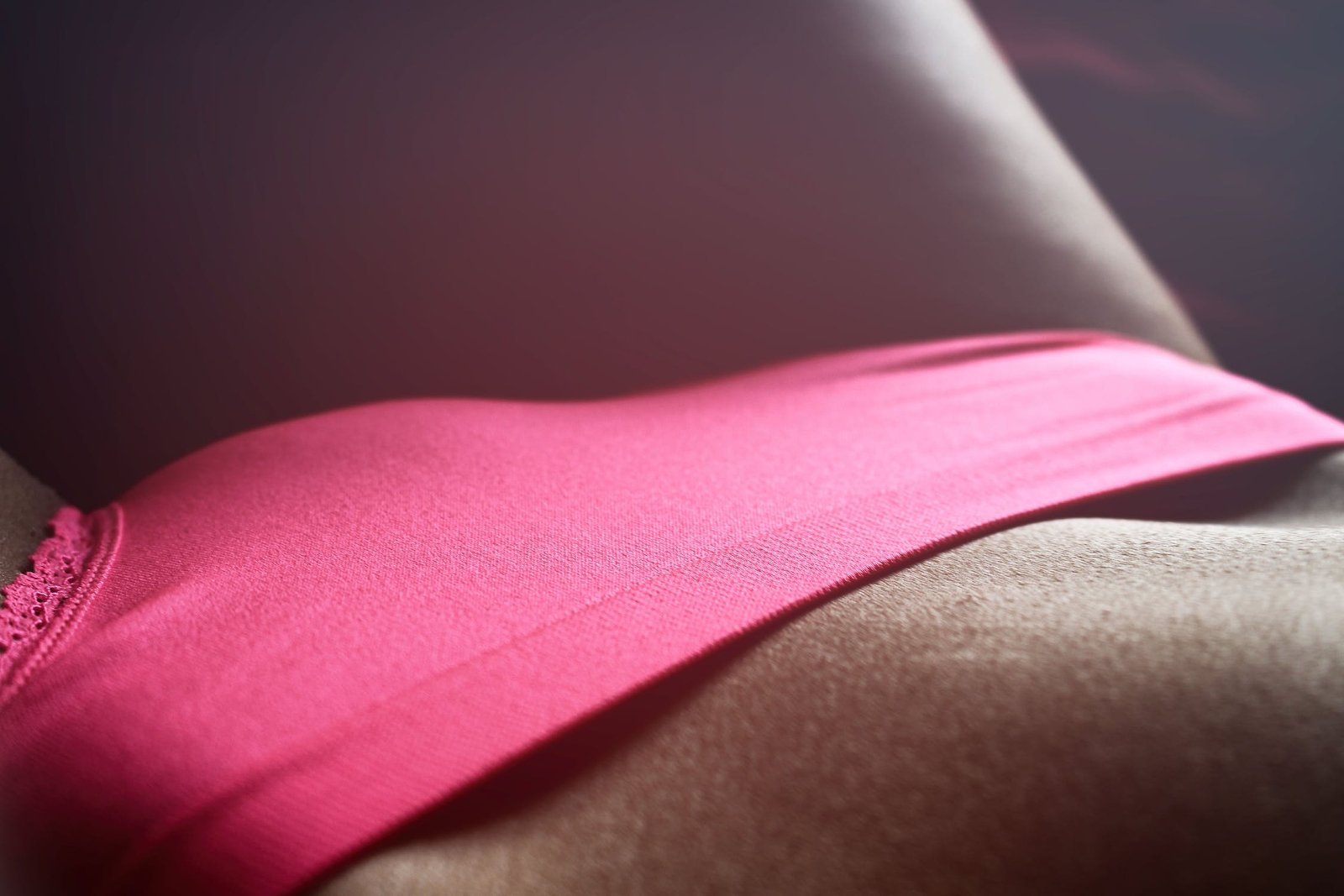While laser hair removal treatment has been around since the 90s, it's more popular today than ever - and for good reason! It's an effective, easy, and safe way to get rid of body and facial hair that requires virtually no upkeep. And while we may be seeing the return of underarm hair and the full bush, the laser hair removal market continues to climb.
Like many people, chances are you've heard that this increasingly popular treatment can be a miracle worker when it comes to getting rid of unwanted hair. However, what most people haven't heard is that there's not just one type of laser - there are five. And some of them go by the kind of scientific names that can really challenge our attention spans. So, in simple terms and to make life just a little easier, here's what they are, what they do, and how to pick the right one for you.
Nd: YAG - Best for Dark Skin
The Nd: YAG laser goes by many different system names - Medlite IV, CoolGlide, Varia, Lyra, Athos, Image Cutera, Sciton Profile, Candela, Gentle YAG, Cynosure Elite - and is the same laser used to remove hyper-pigmentation and/or that unfortunate tattoo you got after one too many drinks in college.
How does it work?
This powerful laser emits longer wavelengths that are able to penetrate deep into the skin, targeting the hair at the papilla - the structure at the base of the hair follicle - without causing damage or discoloration to the surrounding area. It has a relatively low rate of melanin absorption, which makes it much safer to the surface of your skin, but also less damaging to the unwanted hair - which, unfortunately, means you may require more treatments to adequately remove the hair.
Who benefits?
The Nd: YAG laser can be used on a full range of skin colors and is the preferred method for dark skin due to its low rate of melanin absorption. This laser is not as effective on people with fine or light-colored hair.
Does it hurt?
The Nd: YAG laser tends to be a bit more painful than other lasers, and your laser specialist will likely need to apply a numbing cream. You may experience a little redness, itching, and swelling that can last up to a few days. There's also a slight risk of skin discoloration and blistering.
Alexandrite - Best for Olive Skin
The Alexandrite laser - also called GentleLase, Candela, Cynosure Apogee, EpiTouch Plus - is the fastest laser on the market, which is great if you're looking to cover more skin area in less time.
How does it work?
This popular laser also uses a slightly longer wavelength to target the hair follicle (though not as long as the Nd:YAG) and has relatively high melanin absorption rate. With its larger spot size, the Alexandrite is the quickest laser method on the market and is commonly used on large areas of the body like the back, legs, and chest.
Who benefits?
Best suited for light or olive-colored skin, this laser is particularly effective on fine, thin hairs, whereas other lasers may not be.
Does it hurt?
Many people know that there is a "no pain, no gain" element to the Alexandrite laser - in addition to that, there is a significant risk for burns and discoloration with darker skin tones. Ensuring that you're a good candidate by speaking with your laser specialist is a good way to avoid the risk. Swelling, bumps, and redness can also occur but should dissipate on their own in a day or two.
Diode - Best for Fair to Medium-Dark Skin
The Diode laser - with names like F1 Diode, MeDioStar, SLP, LightSheer, LaserLite, Apex, Epistar, is the new kid on the block when it comes to lasers used in hair removal.
How does it work?
This newer laser emits both longer and shorter wavelengths, allowing it to penetrate deeper into the follicle and maintain good melanin absorption. The shorter wavelengths also decrease the risk of skin damage.
Who benefits?
The Diode laser presents a lower risk for damage and discoloration to the surrounding skin, and has proven itself to be useful for most skin tones. The best results are on light to medium-dark skin tones.
Does it hurt?
If you can handle getting your lady bits waxed, you can handle a Diode laser treatment. Of all the lasers, the Diode hurts the least.
Ruby - Best for Very Fair Skin
The Ruby laser is an oldie but a goodie! Commonly called RubyStar and Palomar E2000.
How does it work?
The Ruby is the oldest type of hair removal laser on the market. It's maintained its popularity due in part to its higher melanin absorption rate. Sadly, this also makes this laser prone to leaving the skin discolored if you're not a good candidate.
Who benefits?
Since the Ruby laser has a high melanin absorption rate, it is particularly effective for people with very fair skin looking for light hair removal.
Does it hurt?
If you do happen to have fair skin, you can look forward to a relatively pain-free experience with the Ruby laser.
IPL or Intense Pulsed Light
IPL or Intense Pulsed Light systems can be effective in eliminating unwanted hair, but they aren't technically lasers.
How does it work?
Intense pulsed light systems work on the same principle as many lasers- light energy is absorbed by the undesired hair, which heats up enough to damage the follicle, inhibiting hair growth. The difference between the two is that IPL uses a full spectrum of light with different scattered wavelengths, while lasers use a single wavelength of focused light.
Who benefits?
IPL is best suited for people with fair skin and darker hair. However, some devices like The Kenzzi IPL Handset come with five different power settings to suit a wide range of skin tones and skin sensitivities.
Does it hurt?
IPL is a gentle, relatively painless treatment that works anywhere on the body and is great for those with a low pain threshold and/or sensitive skin. However, it's important to keep in mind that there are hundreds of IPL devices available on the market, and they are not created equal. Look for a top-quality IPL device like The Kenzzi IPL Handset that is gentle on all skin types to avoid any painful side effects like redness and swelling, which are common in cheaply made products.
In Conclusion
When the FDA approved the first laser to safely remove unwanted hair in the late 1990s, treatment was only effective for those with light skin and dark, coarse hair. Laser technology has come a long way since then, and there are now five options when it comes to laser hair removal: Nd:YAG, Alexandrite, Diode, Ruby, and IPL.
If you are considering this increasingly popular treatment to kick unwanted hair to the curb, be sure to schedule a consultation with a laser specialist to make sure you are a good candidate. The laser specialist will review your medical history and examine your skin to pair you with the correct laser for treatment.
If you would prefer to skip the in-office visit altogether or if you happen to have sensitive skin, an at-home IPL device like The Kenzzi IPL Handset might be more up your alley. With KENZZI, you can safely and gently remove unwanted hair from the privacy of your own home.
When it comes to laser hair removal, you've got options. Do your research and talk to a laser specialist to find which one is best for you!
Sources:
Read more

Do you love spending your summers at the beach or pool but hate having to shave your bikini line? Are you tired of the painful ingrown hairs that show up on the most sensitive part of your body fol...

It’s time to put the myth that lasers won’t work on dark skin tones to bed. While this might have been true when the FDA first approved laser hair removal treatment back in the late 90s, technology...

Leave a comment
All comments are moderated before being published.
This site is protected by hCaptcha and the hCaptcha Privacy Policy and Terms of Service apply.